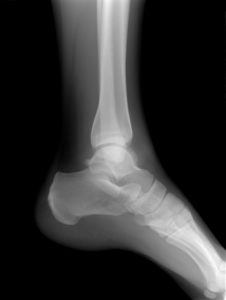What is Ankle ORIF?
In the U.S., one in eight hundred people experience an ankle fracture each year. A single fracture in one bone, which might not prevent a patient from walking, to several breaks in multiple bones, which drive the ankle out of position, can all indicate the severity of a fractured ankle. Ankle fractures can occasionally cause ligament injury as well, which adds to the instability.
Ankle fractures can be stabilized and healed by an ankle ORIF (ankle fracture open reduction and internal fixation) procedure. It is applied to one or more of the ankle joint’s three bones:
- Tibia (shinbone)
- Fibula (smaller leg bone)
- Talus (a bone in the foot)
Usually, ankle ORIF is not the first choice for treating fractured ankles. Health professionals are likely to recommend more conservative therapies, such as over-the-counter pain relievers, braces or casts, and physical therapy, for less serious fractures. An orthopaedic surgeon may attempt, under certain circumstances, to manually manipulate the broken bone through the skin before immobilizing the ankle completely in a plaster cast for a few weeks.
If the damage causes the ankle to become totally unstable, the fracture is deemed serious. Ankle ORIF patients might be a suitable fit if:
- The ankle bones are significantly misaligned
- The broken bones have punctured the skin
- The bones have broken into multiple pieces
An orthopaedic surgeon realigns the fractured bones to aid in the healing process during an open reduction procedure. To get to the bones that need to be repaired, the surgeon might have to make multiple incisions. The process of actually joining the bones together is known as internal fixation, and it may entail the use of screws, rods, plates, wires, or nails. To keep patients unconscious during the entire procedure, general anesthesia is administered to them.
What’s Next Following Ankle ORIF?
 Patients undergoing ankle ORIF surgery may require many months to fully recover, and they should avoid bearing any weight until the cast is taken off. After ankle ORIF, the following is the usual follow-up and rehabilitation schedule:
Patients undergoing ankle ORIF surgery may require many months to fully recover, and they should avoid bearing any weight until the cast is taken off. After ankle ORIF, the following is the usual follow-up and rehabilitation schedule:
- 10 to 2 weeks: A short leg cast is applied to the ankle and the stitches are taken out. The ankle cannot support any weight and is still immobile.
- 2 weeks: After two weeks, see the orthopaedic surgeon again for a checkup that might involve X-rays and, if necessary, a new cast.
- 8 Weeks: After eight weeks after surgery, the cast is taken off, and patients usually get an air cast that fits inside the shoe or a detachable brace. At this stage, patients are usually able to bear weight on the ankle, but if they are in discomfort, they may still need to use crutches or a cane.
During the healing process, patients should see their physical therapist for the recommended number of sessions and complete daily range-of-motion exercises. The following are effective ankle workouts to regain strength and mobility:
- Ankle extension/flexion
- Ankle rolls
- Resisted ankle extension/flexion
- Walking
The greatest prospects for a complete and quick recovery are for patients to follow the guidance of their orthopaedic surgeon and physical therapy team; patients should speak with their surgeon prior to starting any activity program.




